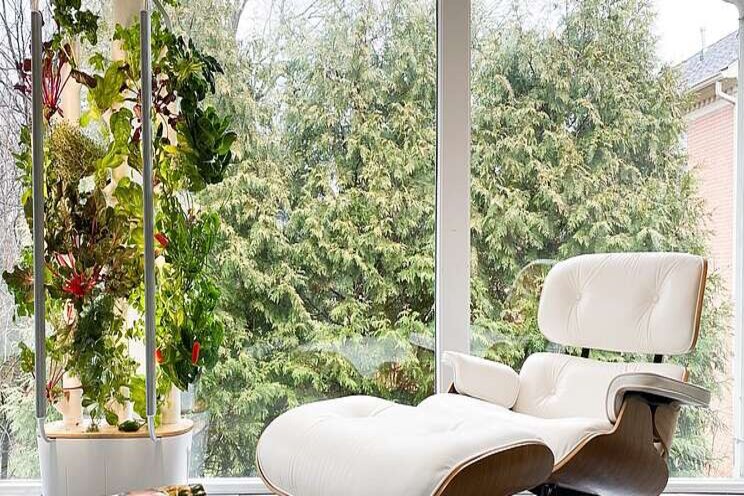At-home vertical farming small, simple, and stylish
Added on 20 October 2020

A company called Gardyn is addressing both of those issues with an at-home vertical farming system that requires minimal input from the user and can easily fit inside a small apartment if need be. The idea, as Gardyn founder and CEO FX Rouxel explained to me over the phone last week, is to make growing food in one's own home as simple and straightforward as possible. To do that, the company has built a farm that relies on AI to do much of the heavy lifting in terms of monitoring and maintaining an edible crop of food. Or as Rouxel said, "The system is managing everything for you."

Gardyn's system is made up of two parts: a compact vertical tower, which can grow as many as 30 plants, and an accompanying app powered by an AI assistant named "Kelby." Users only have to order seeds and "plug" the seed pods into the vertical towers. The system automatically circulates water and nutrients to the plants, while Kelby monitors plant growth and sends reminders when it's time to add water to the garden or harvest the plants.
Right now, available crops from Gardyn's site include mostly leafy greens and herbs, some flowers, cherry tomatoes, and jalapeńos. Customers can also use their own seeds if preferred.
The system uses what Rouxel calls "a hybrid of different hydroponic technologies," including the deep water method and aeroponics. (The company brands its approach as "hybriponics.") By themselves, these different methods have certain limitations in the at-home setting. Deep water, where plant roots are fully submerged in nutrient-enriched water, requires a lot of space. Aeroponics is a great setup for outdoors, but once indoors it requires lighting, which gets expensive very quickly. Gardyn pulled elements from both to create a system that takes up only two square feet of space and doesn't require any extra hardware. "Within just two square feet, you can produce a lot of food," says Rouxel, adding that Gardyn's units have produced "over 25,000 pounds of produce" during the last few months.
That quest to grow a lot of leafy greens in a small amount of space is an area with plenty of competition these days. Farmshelf recently unveiled its first-ever farm for the home, and companies like Rise Gardens and Agrilution (the latter recently bought by Miele) also offer promising solutions for the consumer space.
And while historically, investment in vertical farming has mainly gone towards the industrial-scale indoor farms (think AeroFarms), at-home farms are fast becoming a lucrative area. Investors, Rouxel explained to me, see traditional agriculture as a risky business that's less insurable because its success is in part dependent on the weather outside. With climate change triggering more extreme weather, investors will look more and more to alternative solutions in controlled-environment agriculture.
"I am absolutely convinced we are going to see in the coming two years a total disruption in the way we grow things," he says. Chiefly, that will be growing the food in much closer proximity to consumers, whether through at-home systems like Gardyn's, in-store farms at grocery retailers, rooftop gardens, and high-tech greenhouses. "In future we're going to have a spectrum of solutions," Rouxel noted.
Getting these vertical farms closer to consumers and in their own homes will require bringing the price of the machines down. At the moment, Gardyn's system is roughly on par pricewise with other systems out there that can realistically feed a family of four: $799 for the base model all the way up to $1485 for the "Plus" model.
Rouxel is aware that the cost is still too high for many consumers. "We don't want this to be only for well-off people," he told me. "It's important that we find ways that anyone can afford this."
Many companies, including Gardyn, offer financing options on their farms now. And more investment dollars going into the space in the future could mean companies have the time and space to innovate on ways to make their system cheaper for the average consumer.
While pricing remains a question, one thing that's certain is that at-home vertical farming is on the path to becoming a regular part of the kitchen, rather than just a trend. "What we want is to develop solutions that will quickly change the way people access food," said Rouxel. "We won't solve everything, that's for sure, but we want to be part of the solution for how we shape food."Top of Form
Bottom of Form
Source and Photo Courtesy of The Spoon
Source: The Spoon
More news















